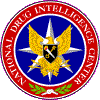ARCHIVED
![]() To Contents
To Previous Page To Next Page
To Publications Page To
Home Page
To Contents
To Previous Page To Next Page
To Publications Page To
Home Page

|
National Drug Intelligence Center National Drug Threat Assessment 2007 October 2006 Drug Money LaunderingStrategic Findings
OverviewMexican and Colombian DTOs are responsible for most wholesale-level drug money laundering in the United States. Mexican and Colombian DTOs together generate, remove, and launder between $8.3 billion and $24.9 billion in wholesale distribution proceeds from Mexico-produced marijuana, methamphetamine, and heroin and South American cocaine and heroin annually. 13These DTOs primarily use bulk cash and monetary instruments smuggling, wire remittances, and the Black Market Peso Exchange (BMPE).14 The Southwest Border area is a primary focus of federal, state, and local law enforcement scrutiny and currency interdiction activities, because of significant bulk cash smuggling activity into Mexico. This activity quite likely is the result of U.S. regulatory and law enforcement actions, which have made it increasingly difficult for drug traffickers to place their illicit proceeds directly into U.S. financial institutions. Both Mexican and Colombian DTOs transport illicit drug proceeds from U.S. drug markets to other U.S. locations for consolidation. The proceeds often are transported in bulk to an area near the U.S.-Mexico border and are either smuggled into Mexico at Southwest Border POEs, primarily in South Texas, or remitted electronically to Southwest Border locations, where the transferred cash is then smuggled across the U.S.-Mexico border. Although bulk cash smuggling is the principal method for moving drug money out of the country, wire remittances are also relied upon to facilitate drug money laundering. Colombian DTOs use money services businesses (MSBs) to electronically wire-transfer drug proceeds directly to Colombia from major U.S. drug market areas, such as Miami (FL) and New York City. Mexican DTOs generally wire transfer drug proceeds from U.S. market areas to consolidation points near the Southwest Border. Transfers are typically structured in amounts less than $3,000 and sent by several individuals to evade personal identification reporting requirements. The funds are then consolidated and smuggled into Mexico, thereby eliminating any documentation associated with a wire transaction, hiding the intended final destination of the funds. Once drug proceeds are successfully smuggled into Mexico, one of the following scenarios typically occurs, each with its own risks and advantages for the money launderer:
The U.S.-Canada border also is impacted, as an estimated $5.2 billion to $21.2 billion is generated through the wholesale distribution of marijuana and MDMA by Canada-based DTOs, and much of those illicit drug proceeds are transported in bulk across the roughly 4,000-mile Northern Border.15 The length of the border renders currency interdiction difficult. Interdiction is further challenged in some rural corridors, particularly in sovereign tribal lands that incorporate both Canadian and U.S. territories. Although bulk cash will quite likely remain the preferred method of transporting currency to and across U.S. borders, anti-money laundering regulatory and law enforcement measures will drive some launderers to seek alternative methods to launder drug proceeds, and new technologies--such as stored value cards and online payments systems--will provide opportunities for such alternate methods, potentially replacing some traditional money laundering methods. For example, open-system 16 stored value cards are superior to the use of money remitters or bulk cash smuggling via package delivery services and commercial conveyances (airplanes, buses, and trains) because the cards can be used without fear of documentation, identification, law enforcement suspicion, or seizure. Such cards are frequently anonymous and can essentially be used as a cross-border remittance, since card value generally can be added or withdrawn at automated teller machines (ATMs) worldwide. Although loosely regulated under the Bank Secrecy Act (BSA), these cards are not subject to the many reporting and recordkeeping requirements, providing additional anonymity. Unlike cash, the cards cannot be seized by law enforcement for a Currency or Monetary Instrument Report (CMIR)17 violation. However, law enforcement personnel can seize the cards under separate statutes if there is probable cause to believe that the cards are the proceeds of illegal activity. Online payment systems, including electronic gold, provide anonymity, versatility, and convenience and will continue to gain in popularity with international drug money launderers because such systems utilize the worldwide reach of the Internet and eliminate other problems associated with fluctuating exchange rates for international currencies.
Intelligence GapAlthough the Southwest Border continues to be a significant area of concern for drug money laundering, the extent of similar activity along the Northern Border is largely unknown. A thorough, comprehensive assessment of money laundering activity along that Border would provide the intelligence necessary to counter such activity, thereby eliminating this intelligence gap.18 End Notes13. These figures were derived by multiplying the total quantity
of Mexico- and Colombia-produced drugs available at the
wholesale level in the United States by the wholesale prices for
those drugs. |
End of page.